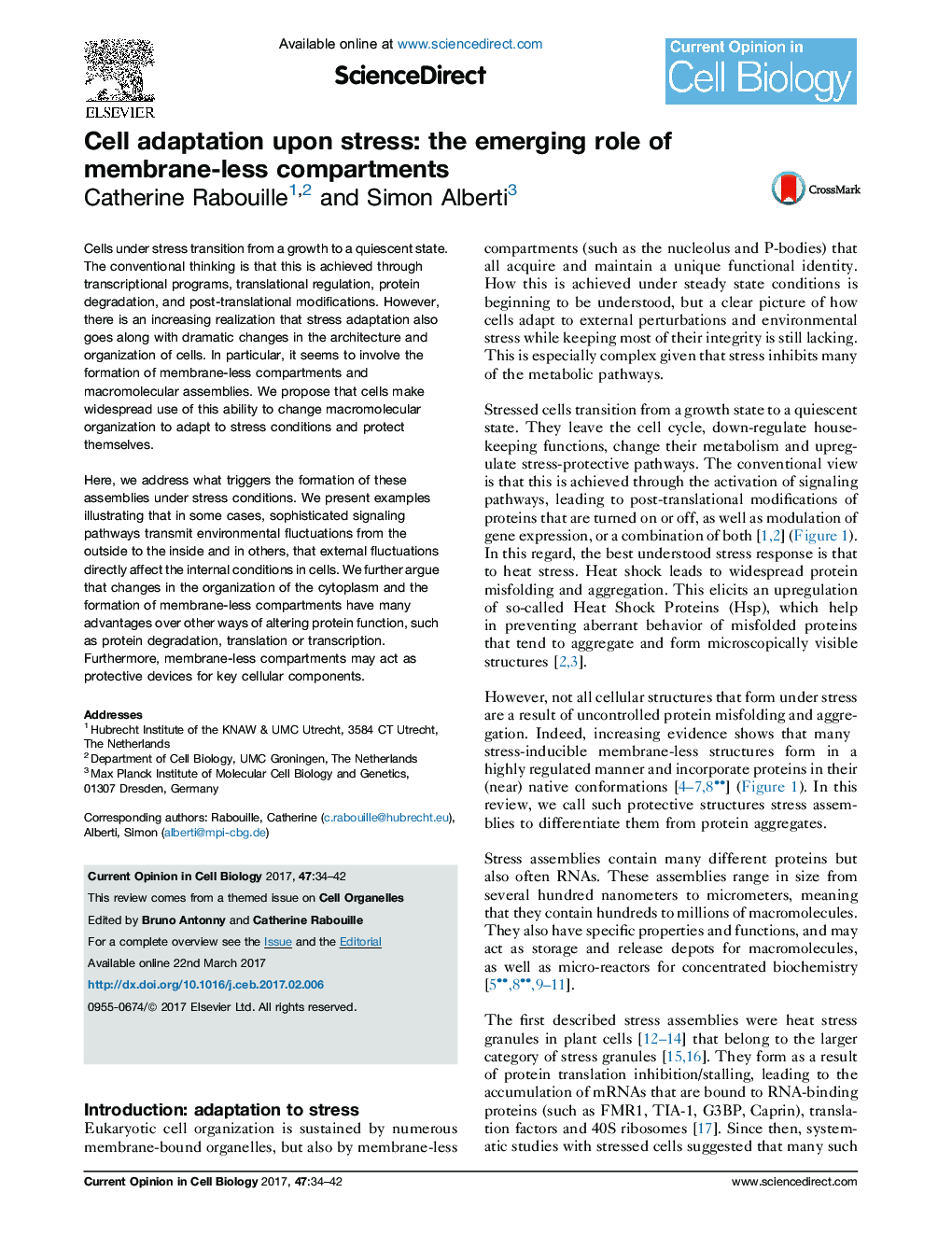| کد مقاله | کد نشریه | سال انتشار | مقاله انگلیسی | نسخه تمام متن |
|---|---|---|---|---|
| 5531107 | 1549459 | 2017 | 9 صفحه PDF | دانلود رایگان |
- Cells form membrane-less compartments to adapt to stress conditions.
- Compartments form through signaling or fluctuations in physico-chemical conditions.
- Membrane-less compartments promote recovery from stress and survival.
- Compartments may act as protective devices for key cellular components.
Cells under stress transition from a growth to a quiescent state. The conventional thinking is that this is achieved through transcriptional programs, translational regulation, protein degradation, and post-translational modifications. However, there is an increasing realization that stress adaptation also goes along with dramatic changes in the architecture and organization of cells. In particular, it seems to involve the formation of membrane-less compartments and macromolecular assemblies. We propose that cells make widespread use of this ability to change macromolecular organization to adapt to stress conditions and protect themselves.Here, we address what triggers the formation of these assemblies under stress conditions. We present examples illustrating that in some cases, sophisticated signaling pathways transmit environmental fluctuations from the outside to the inside and in others, that external fluctuations directly affect the internal conditions in cells. We further argue that changes in the organization of the cytoplasm and the formation of membrane-less compartments have many advantages over other ways of altering protein function, such as protein degradation, translation or transcription. Furthermore, membrane-less compartments may act as protective devices for key cellular components.
Journal: Current Opinion in Cell Biology - Volume 47, August 2017, Pages 34-42
